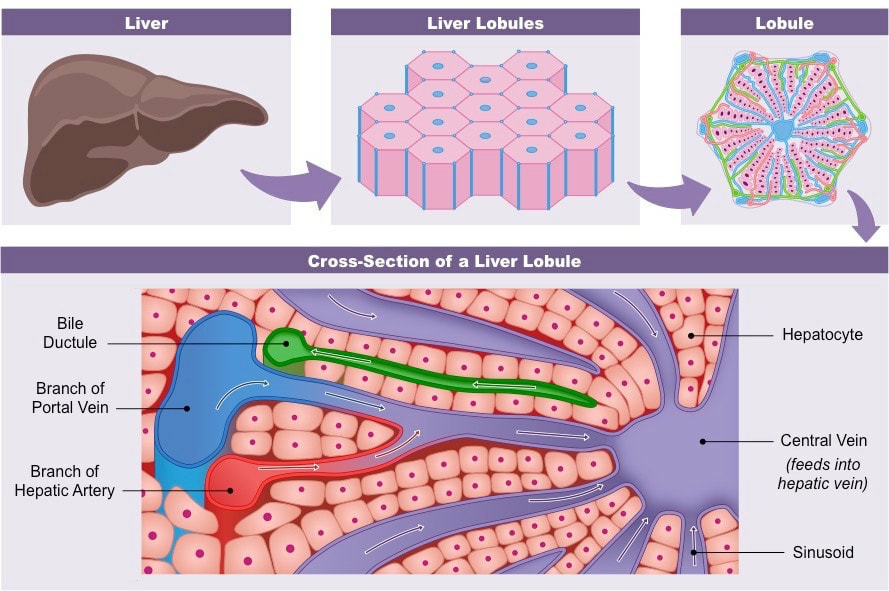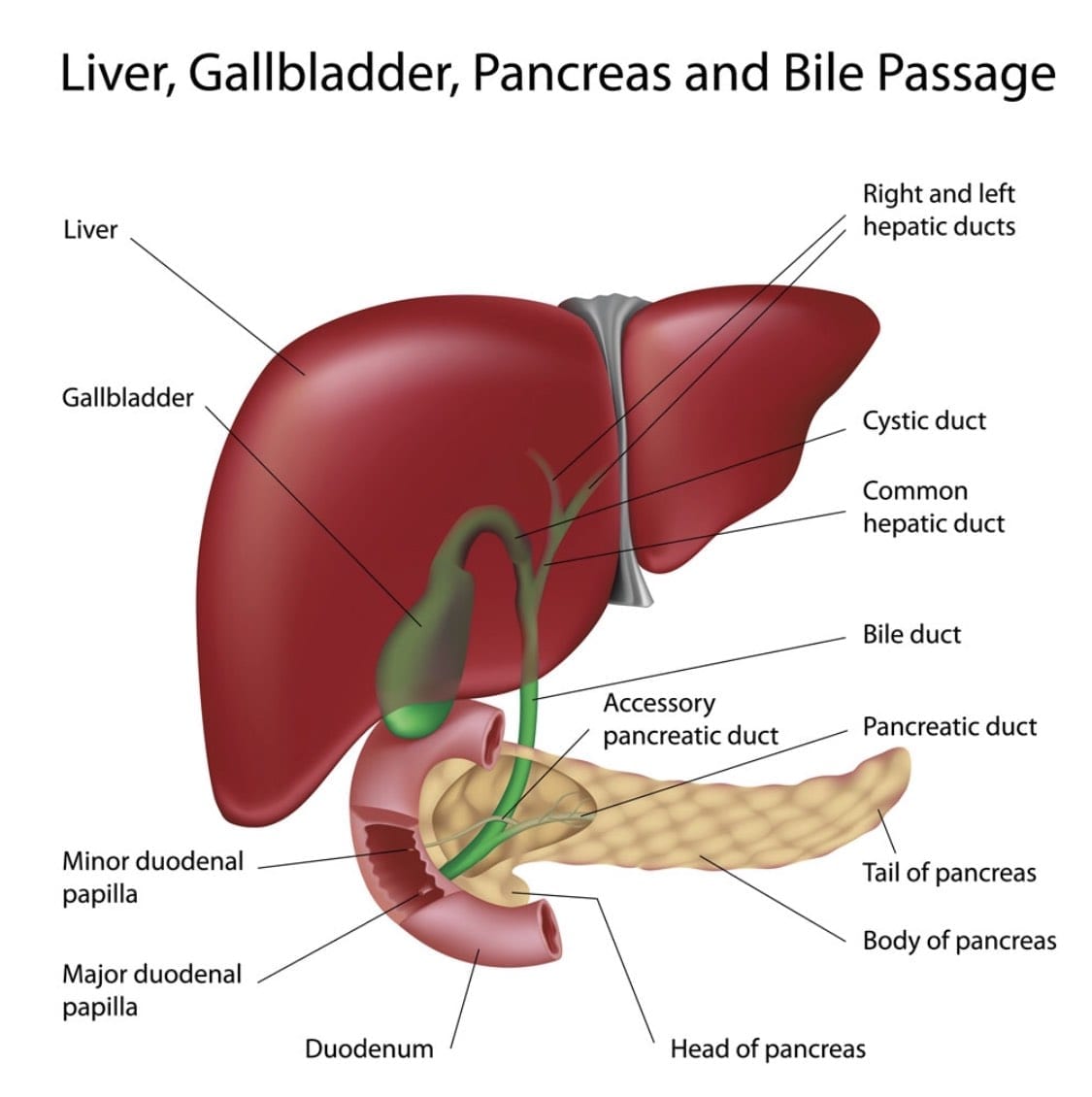IB HL D3A2 Biology Diagrams
IB HL D3A2 Biology Diagrams As part of the digestive system, the liver creates bile, a fluid that helps digest fats. This bile is stored in the gallbladder, a small pouch beneath the liver, and released into the small intestine when needed for digestion. Liver anatomy consists of two main sections, called lobes, but it's much more than that. From there, the bile ducts in the right lobe flow into the right hepatic duct; bile ducts in the left lobe flow into the left hepatic duct. These, in turn, feed into the common hepatic duct. A branch of the common hepatic duct, the cystic duct, leads to the gallbladder. The gallbladder is a hollow bag which stores and concentrates bile.

Traditionally, the liver was divided into four anatomical lobes: the right, left, caudate and quadrate lobes. However, this has been superseded by the use of the Couinaud classification which divides the liver into eight functional units (known as segments), supplied by individual segmental hepatic arteries, portal veins and bile ducts, which The bile ducts are a series of tubes that drain bile from the liver and either direct it to the gallbladder for temporary storage or pass it into the duodenum where it can be expelled with the feces. The biliary tree as it is known has many different parts, all of which serve the same function, and are prone to a number of diseases that can ultimately affect the liver, gallbladder and/or

Bile Duct Anatomy, Parts and Pictures of Liver, Gallbladder Drainage Biology Diagrams
The liver has two main lobes--the right lobe, which is the largest, and the left lobe. The liver, gallbladder and bile ducts are part of the human the gastrointestinal, or digestive tract. The liver contains many small bile ducts that allow bile that is made by the liver to drain into the gallbladder (see anatomy below). Morphological anatomy of the liver. Based on Couinaud classification, the liver is divided into eight independent functional segments (Figs. 6 and 7). Each segment has its own portal pedicle consisting of the hepatic arterial branch, portal branch, and the bile duct with a separate hepatic venous branch that provides outflow (Fig. 8).

These bile ducts next join to form the larger left and right hepatic ducts, which carry bile from the left and right lobes of the liver. Those two hepatic ducts join to form the common hepatic duct that drains all bile away from the liver. This artery then bifurcates into the gastroduodenal artery and the hepatic artery proper, which then also bifurcates into the right and left hepatic arteries. The right and left hepatic arteries mainly supply the non-parenchymal part of the liver, such as the bile ducts within the liver. Now, let's talk about venous drainage of the liver.
